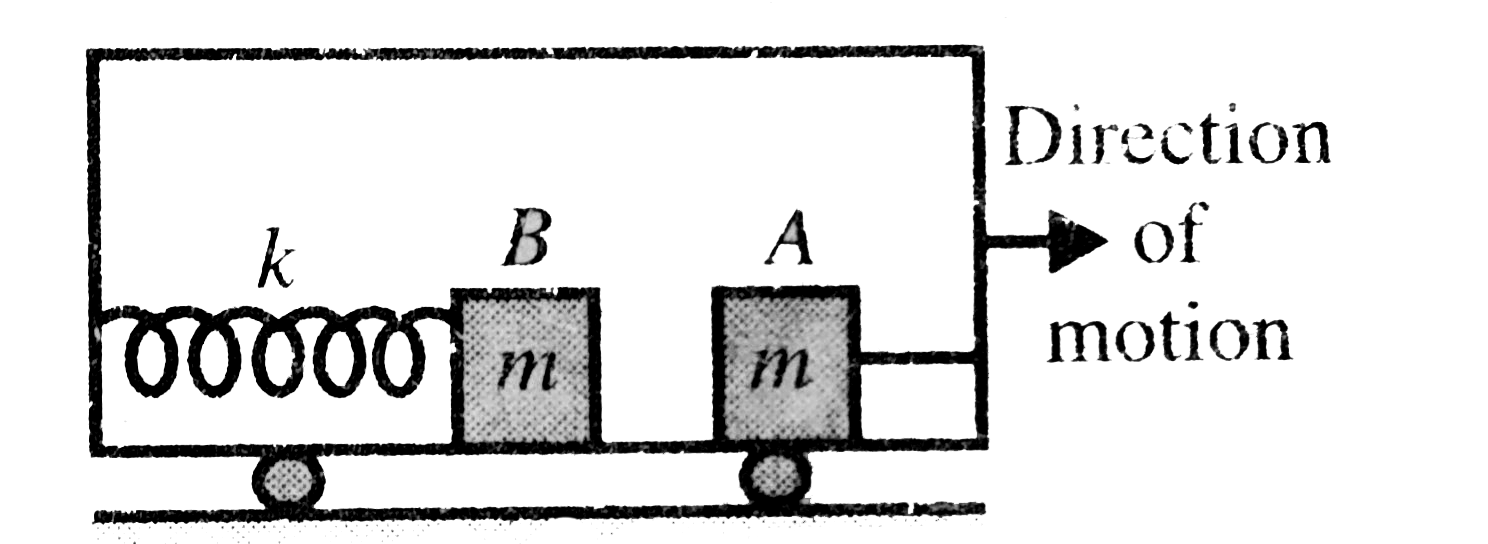When brakes are applied on a moving car, the car dips to the front. Why ? [That is try to show that front wheels are more pressed as compared to rear ones when the brakes are applied]. Assume that centre of mass of the car is equidistant from the front and rear wheels.
Step by step video, text & image solution for When brakes are applied on a moving car, the car dips to the front. Why ? [That is try to show that front wheels are more pressed as compared to rear ones when the brakes are applied]. Assume that centre of mass of the car is equidistant from the front and rear wheels. by Physics experts to help you in doubts & scoring excellent marks in Class 11 exams.
Updated on:21/07/2023Topper's Solved these Questions
Similar Questions
The rear wheel on a clown's bicycle has twice the radius of the front wheel. (a) When the bicycle is moving, is the linear speed at the very top of the rear wheel greater than, less than, or the same as that of the very top of the front wheel? (b) Is the angular speed of the rear wheel greater than, less than, or the same as that of the front wheel?
View SolutionWhat must be the minimum coefficient of friction μ between the tyres of the drive wheels of a car and the road, if the car and the road, if the car of mass m=2 tons and load M=4 tons, has an acceleration a=0.2ms−2 ? Consider the problem for two cases : (a) all the wheels are driven , (b) only the rear wheels are driven. Assume that the centre of gravity of the car lies at the mid-point between the axes of the wheel and the centre of gravity of the load above the rear axle.
View Solution
Knowledge Check
What happens to the speed of a moving car when force is applied in the opposite
ASpeed increasesBSpeed decreasesCNo change in speedDChange in directionBrakes are applied to car moving with disengaged engine, bringing it to a halt after 2s Its velocity at the momnet when the breaks are applied if the coefficient of friction between the road and the tyres is 0.4 is .
A3.92ms−1B7.84ms−1C11.2ms−1D19.6ms−1Brakes are applied to a car moving with disengaged engine, bringing it to a halt after 2s. Its velocity at the moment when the breaks are applied if the coefficient of friction between the road and the tyres is 0.4 is
A3.92ms−1B7.84ms−1C11.2ms−1D19.6ms−1
A car was moving at a rate of 18 km/h. When thebrakes were applied, it comes to rest in a distance of 100 m. Calculate the reterdation produced by the brakes.
View SolutionAssertion: When brakes are applied on a wet road, a car is likely to skid.
Reason: Brakes prevent rotation of the wheels, and there is not sufficient friction between the road and the whells.
View SolutionThe diameter of the front wheel of an engine is 2x cm and what of rear wheel is 2y cm. To cover the same distance, find the number of times the rear wheel will revolve when the front wheel revolves 'n' times.
View SolutionFigure shows two identical blocks each of mass m kept on a smooth floor. Block A is connected to front wall with a just taut straight string and block B is connected to rear wall with a relaxed spring. Assume that the floor of the train car is smooth and exerts no horizontal forces on the blocks. Mark the correct statement(s).

View Solutionthe radus if the rear wheel of bicycle is twice that of the front wheel. When the bicycle is moving . The angular speed of the rear wheel compared to that of the front is
View Solution
